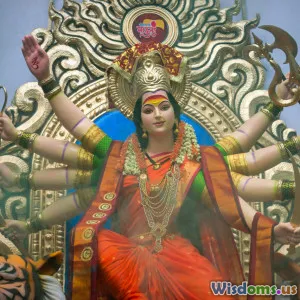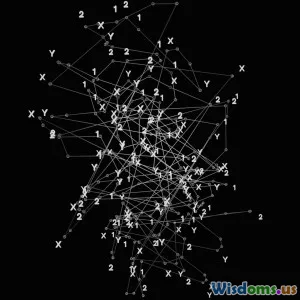
Could the Illuminati Still Exist Signs You Might Overlook
9 min read Explore overlooked clues that hint the Illuminati might still influence today's world. (0 Reviews)
Could the Illuminati Still Exist? Signs You Might Overlook
Introduction
For centuries, the Illuminati has remained one of the most enigmatic and debated secret societies in popular culture and conspiracy theories alike. Originating in the late 18th century Bavaria, this organization was rumored to seek influence over global political and economic systems. But despite widespread skepticism and official disbanding, many still wonder: could the Illuminati still exist today?
While blatant signs are rare and often dismissed as fringe theories, this article will uncover subtle, often overlooked clues suggesting that an organized, secretive elite may still pull strings behind the scenes. The aim is not to dive into unsubstantiated myths, but rather to explore real-world symbols, connections, and socio-political patterns worthy of consideration.
Historical Context of the Illuminati
Before examining contemporary evidence, it is important to understand what the Illuminati was and why suspicions about its survival persist. Founded in 1776 by Adam Weishaupt, a professor of canon law in Bavaria, the original Illuminati promoted Enlightenment ideals such as reason, secularism, and opposition to religious and political tyranny.
However, due to fear of revolution and challenges to existing power structures, the Bavarian government outlawed the group by 1785. Despite their official dissolution, the Illuminati quickly became fodder for conspiracy theorists, who claimed that key members escaped suppression and continued working clandestinely.
Signs You Might Overlook
1. Symbolism in Popular Culture and Architecture
One of the most quoted signs of Illuminati influence is the pervasive use of certain symbols—particularly the Eye of Providence (an eye within a triangle) and the pyramid. These symbols have deep ties to the original Illuminati iconography and have been embedded in art, corporate logos, and even national emblems.
For example, the Eye of Providence appears on the reverse of the Great Seal of the United States, famously on the $1 bill. Some researchers argue this symbolizes the early American founders' possible connections to secret societies influenced by Renaissance and Masonic traditions —and could hint at continuing secretive influence.
More contemporary examples include music videos and films that subtly incorporate Illuminati-related motifs. While many performers dismiss these as artistic choices or aesthetic designs, others argue the symbols are intentional signs of allegiance or control by elite groups.
2. Dense Networks Among the Global Elite
Influence today is often described not through secret cults but interconnected networks of power spanning politics, corporations, finance, and media. While globalization has made alliances and associations transparent, some relationships remain opaque, fostering speculation about coordinated agendas.
Consider the existence of exclusive gatherings such as the Bilderberg Group, a largely invitation-only global conference involving political leaders, billionaires, and academics. Since its founding in 1954, the Bilderberg meetings have sparked accusations of secret decision-making beyond democratic oversight—echoing fears about hidden Illuminati-like control.
Similarly, membership in organizations like the Trilateral Commission or the Council on Foreign Relations includes many figures associated with shaping global policies, sparking questions about whether these informal ‘power clubs’ form modern echoes of the Illuminati.
3. Conspicuous Coincidences in Global Events
Sometimes, patterns in major world events raise eyebrows when analyzed carefully. For instance, numerous critical moments in political history appear to benefit concentrated groups exerting influence in a way that’s not immediately visible to the public.
The 2008 global financial crisis, for example, disproportionately affected ordinary citizens while expanding the power of elite bankers and top investors. Critics suggest the smooth coordination of certain bailout strategies and economic narratives hints at unseen orchestrations that could stem from secretive elites.
Though not proof of the Illuminati by itself, such outcomes reinforce theories about clandestine control over economic and political structures.
4. Hidden Agendas Behind Technological and Social Changes
Rapid advancements in technology and shifts in societal norms are often seen as organic progressions. However, some analysts propose these changes align suspiciously with goals benefiting an elite few.
For example, the rise of surveillance technology, AI data collection, and increasing centralization of information control potentially serve the interests of powerful groups aiming to monitor and influence populations covertly.
In the social realm, orchestrated movements or widespread narratives sometimes advance ideological conformity, diluting dissent and reinforcing centralized power—a strategy the Illuminati is rumored to have pursued historically through manipulation.
5. Testimonies and Whistleblower Accounts
Over the years, various whistleblowers and insiders have claimed to unveil Illuminati-inspired conspiracies. Although many such accounts face skepticism or lack concrete evidence, their consistency in describing hierarchical secret organizations operating globally invites some consideration.
For instance, investigative journalist Jim Marrs highlighted multiple instances where insiders alluded to shadow governments and secret elite cabals. While not definitive, their testimonies add pieces to the complex puzzle.
Skepticism and Rational Considerations
It is vital to approach the Illuminati topic critically. Many signs can be misinterpreted due to cognitive biases, paranoia, or misinformation. Symbols like the Eye of Providence have been broadly adopted in contexts unrelated to secret societies.
Moreover, power elites and interconnected global networks exist transparently without invoking hidden Illuminati membership. Real-world influence can often be explained by political interest groups, business alliances, and historical institutions without resorting to grand conspiracies.
Nevertheless, the persistence of symbolism, exclusive elite forums, patterned political-economic outcomes, and whistleblower narratives cannot be dismissed outright. These overlapping signs invite healthy inquiry about transparency and accountability in power structures worldwide.
Conclusion
Could the Illuminati still exist? Definitive proof remains elusive, largely shrouded in secrecy and interpretation. However, several overlooked indicators—such as persistent symbolic usage, dense elite networks, coordinated global events, emerging social control technologies, and insider testimonies—warrant serious examination.
The quest is not necessarily to confirm conspiracy but to remain vigilant about how power consolidates and manifests in modern society. Understanding these subtle signals empowers citizens, encouraging transparency and critical scrutiny of authority. Whether the Illuminati are a reality, a myth, or a metaphor for elite control, exploring these signs deepens our awareness of hidden socio-political dynamics.
Ultimately, the most meaningful action is cultivating informed skepticism and demanding open governance, ensuring that hidden influences—if any—are brought to light.
By analyzing overlooked signs rather than sensationalizing myths, we gain a clearer lens through which to view secretive power in today's complex world.
Rate the Post
User Reviews
Popular Posts





















